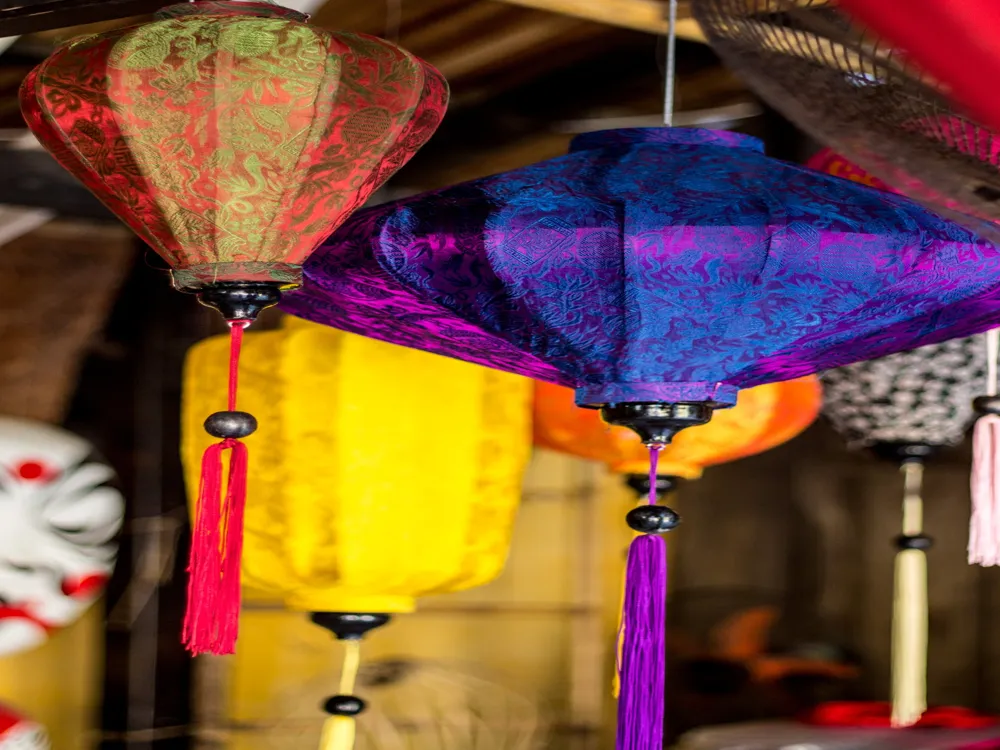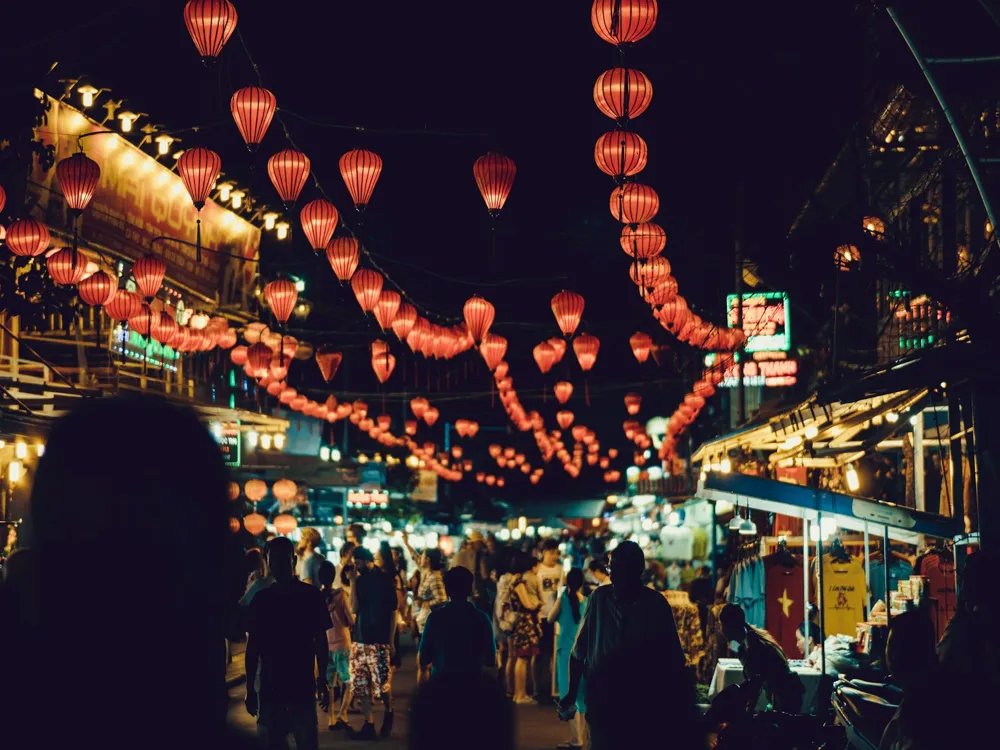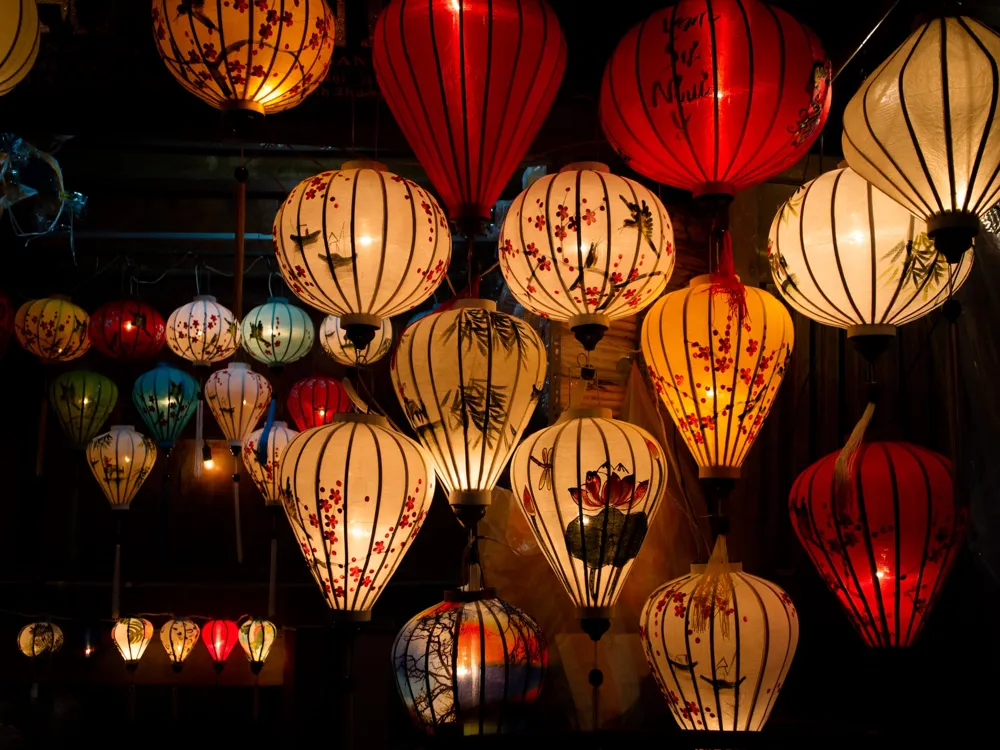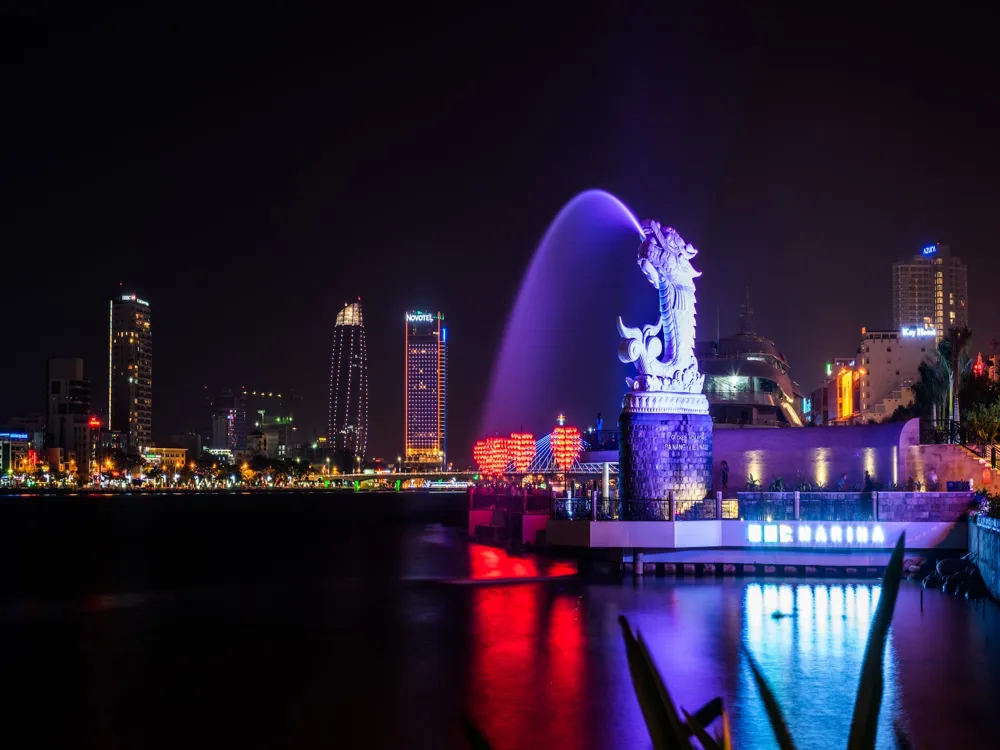The Fujian Assembly Hall, located in the heart of Hoi An, Vietnam, is a magnificent example of historical and cultural fusion. Originally built in the 17th century by Chinese immigrants from the Fujian province, this hall has become a hallmark of architectural and cultural amalgamation. Over the years, the assembly hall has served various functions, evolving from a meeting place for Chinese merchants to a revered temple dedicated to Thien Hau, the sea goddess, believed to protect sailors from peril. As you step into the Fujian Assembly Hall, you are greeted by a vibrant courtyard filled with lush greenery and ornate statues. The hall itself is a testament to the intricate craftsmanship of the past. The layout, while resonating with the traditional Chinese temple structure, also incorporates unique Vietnamese elements, creating a splendid blend of the two cultures. The main hall, adorned with intricate carvings and detailed murals, narrates stories from Chinese folklore and mythology, while the roof is decorated with delicately crafted dragons, symbolizing power and nobility in Asian culture. The assembly hall is not just an architectural marvel but also a living piece of history. It reflects the social and economic dynamics of Hoi An, once a bustling port city that facilitated international trade and cultural exchanges. This historical edifice has withstood the test of time, surviving wars, and natural calamities, to tell the tale of a resilient community that adapted and thrived in foreign lands. Today, the Fujian Assembly Hall stands as a proud emblem of Hoi An's UNESCO World Heritage Site status, drawing visitors from across the globe. Its rich cultural heritage, architectural beauty, and historical significance make it a must-visit destination for anyone interested in exploring the depths of Vietnamese culture and history. The architecture of Fujian Assembly Hall is a splendid showcase of the fusion of Chinese and Vietnamese design elements. The hall's layout is typical of Chinese temples with a central courtyard, an altar room, and a grand hall, but with distinctive Vietnamese touches. One of the most striking features is the elaborate front gate, which welcomes visitors with its brightly colored façade adorned with dragons, phoenixes, and other mythical creatures, symbolizing prosperity and good luck. As you walk through the courtyard, you can't help but admire the attention to detail in every aspect of the design. The intricate roof tiles, ornamental ridges, and the well-preserved statues are perfect examples of Chinese architectural influence. The use of vibrant colors, particularly red and gold, is not just aesthetically pleasing but also holds cultural significance, symbolizing happiness, wealth, and high status in Chinese culture. Inside, the main hall is a masterpiece of craftsmanship. The ceilings are adorned with exquisite wooden carvings depicting scenes from Chinese legends, and the walls are lined with intricate panels and murals. The altar, dedicated to the sea goddess Thien Hau, is a focal point with its elaborate decorations and offerings. This sacred space exudes a sense of tranquility and reverence, inviting visitors to reflect on the spiritual aspects of the culture. The assembly hall also showcases a rich collection of antiques and artifacts, including ancient scrolls, porcelain, and sculptures, each telling a unique story of the Chinese community in Hoi An. These historical pieces provide invaluable insights into the social and cultural lives of the immigrants who built and maintained this magnificent structure. In summary, the architecture of Fujian Assembly Hall is not just a feast for the eyes but also a portal into the past, offering a glimpse into the lives and beliefs of the Chinese diaspora in Vietnam. Its preservation and continued reverence are a testament to the enduring cultural connections and mutual respect between the Chinese and Vietnamese people. Remember that the Fujian Assembly Hall is a place of cultural and religious significance. Visitors should dress modestly, covering shoulders and knees, as a sign of respect. The best time to visit is early in the morning or late in the afternoon to avoid the crowds and experience the hall in a more serene setting. Additionally, visiting during local festivals can be a unique experience, offering a glimpse into traditional celebrations. Photography is allowed, but it's important to be respectful. Avoid using flash inside the hall, and be mindful not to disturb other visitors or worshippers while taking photos. Consider hiring a guide or joining a guided tour to gain deeper insights into the history and architecture of the Fujian Assembly Hall. This can enrich your understanding and appreciation of this cultural landmark. While exploring, be respectful of the cultural and religious practices within the hall. It's a place of worship for many, so maintaining a quiet and respectful demeanor is appreciated. Fujian Assembly Hall is located in the heart of Hoi An's old town, making it easily accessible. If you're staying in the old town, the best way to reach the hall is on foot, as this area is mostly pedestrianized. For those staying further away, you can use a bicycle, which is a popular mode of transport in Hoi An, or hire a taxi or a motorbike. Public transport options are limited in Hoi An, so taxis or rented bikes are the most convenient way to get around. If you're coming from outside Hoi An, the nearest airport is Da Nang International Airport, from where you can take a taxi or arrange a private transfer to Hoi An, which is about 30 kilometers away. Read More:Overview of Fujian Assembly Hall in Hoi An
Architecture of Fujian Assembly Hall
Tips When Visiting Fujian Assembly Hall
Dress Appropriately
Best Time to Visit
Photography Etiquette
Explore with a Guide
Be Mindful of Cultural Sensitivities
How To Reach Fujian Assembly Hall
Fujian Assembly Hall
Hoi An
₹ 15,200 onwards
View hoi-an Packages
Weather :
Tags : Historical Site
Timings : Daily - 7 AM to 6 PM
Planning a Trip? Ask Your Question
Also Refered As:
Assembly Hall Of Fujian Chinese
Hoi-an Travel Packages
View All Packages For Hoi-an
Top Hotel Collections for Hoi-an

Private Pool

Luxury Hotels

5-Star Hotels

Pet Friendly
Top Hotels Near Hoi-an
Other Top Ranking Places In Hoi-an
View All Places To Visit In hoi-an
View hoi-an Packages
Weather :
Tags : Historical Site
Timings : Daily - 7 AM to 6 PM
Planning a Trip? Ask Your Question
Also Refered As:
Assembly Hall Of Fujian Chinese
Hoi-an Travel Packages
View All Packages For Hoi-an
Top Hotel Collections for Hoi-an

Private Pool

Luxury Hotels

5-Star Hotels

Pet Friendly






















